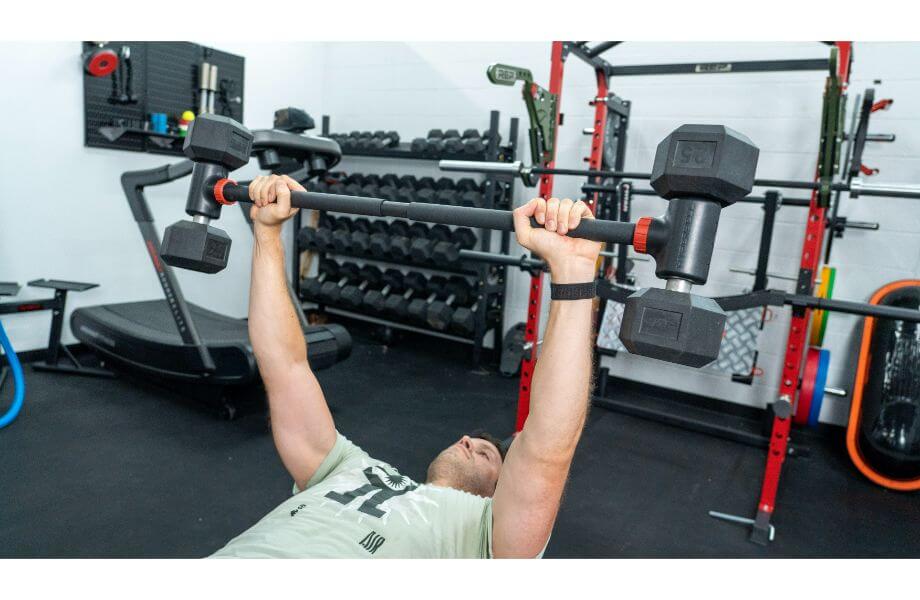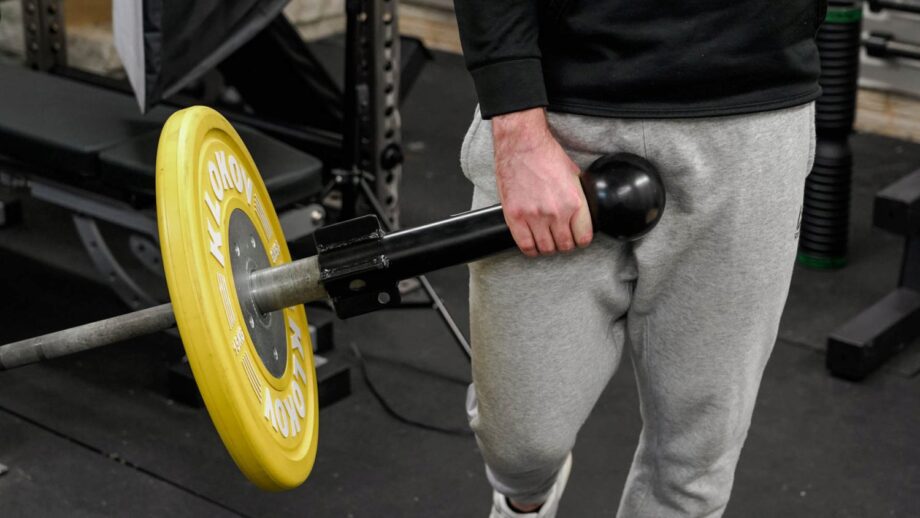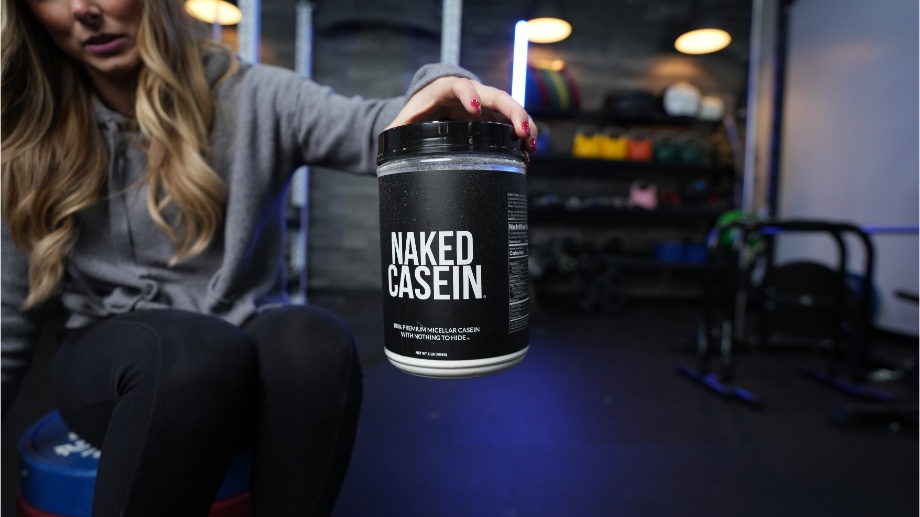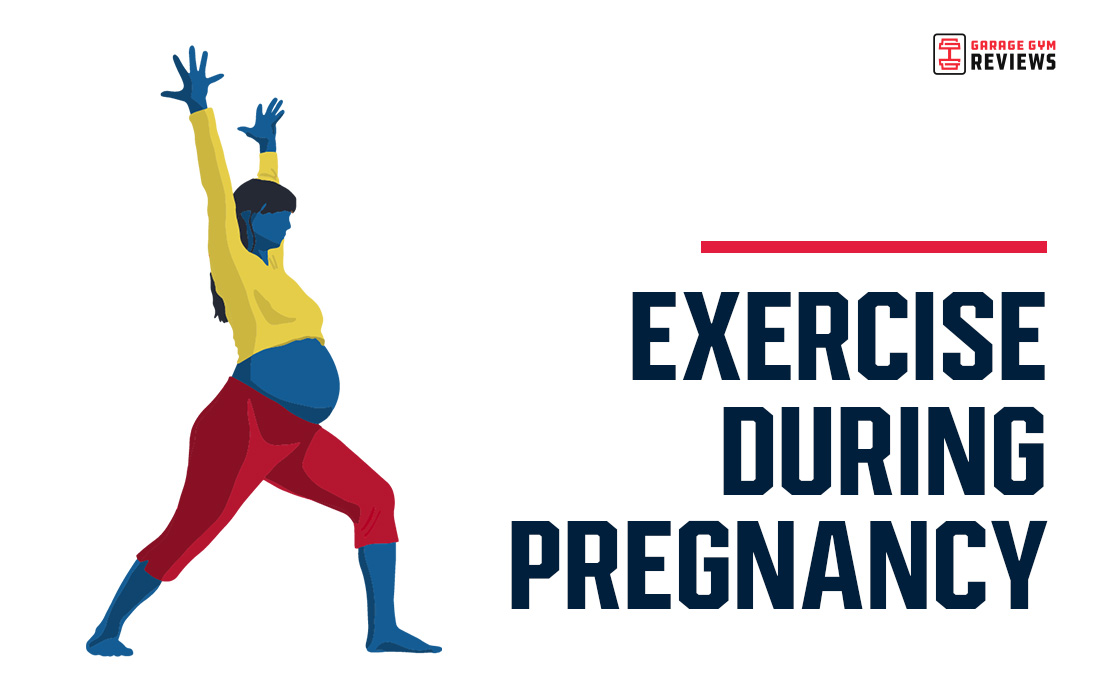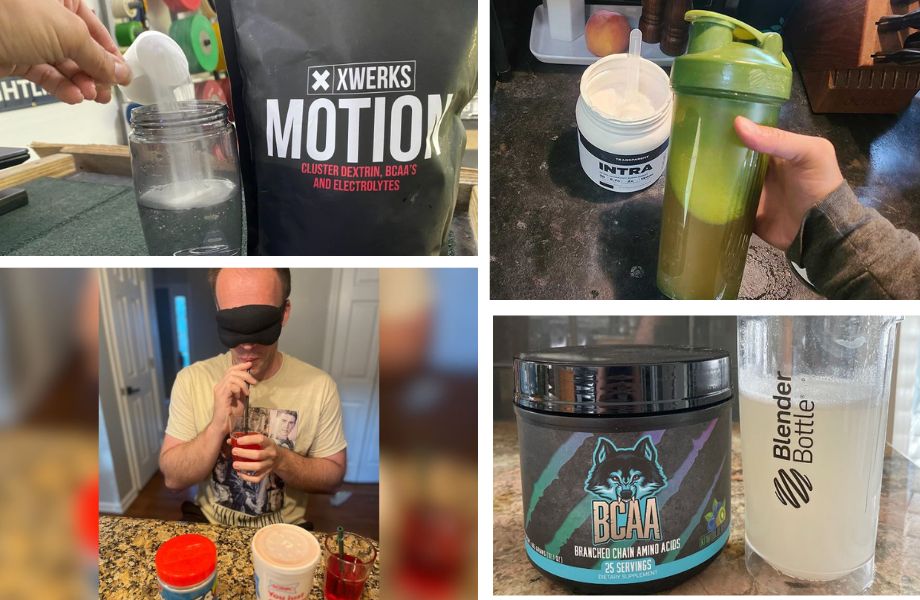Many of us fight tooth and nail to chisel out some ever-important “me-time” and sneak in some cardio or weight training when we can. Setting aside time to make fitness a social thing, however, offers a lot of upside, as working out with a friend helps keep you consistent, motivated, and, most importantly, safe.
That’s because bringing along a training partner often means you get to lift with a spotter. Whether you’re working through a set of heavy squats, testing your one-rep max on the bench press, or raising two monster-sized dumbbells over your head in a military press, a spotter allows you to safely push your limits and make headway towards your fitness goals.
Knowing how to be a good spotter is about much more than just standing around. You need to understand the basic principles of spotting, including proper positioning, how to provide support, and what specifically to look out for in order to effectively anticipate and prevent problems.
Do you know how to be a good spotter?
Check out our guide and find out!
What Is a Spotter at the Gym?
A spotter assists and supports a lifter during exercises that involve heavy weights, maximal effort, or potential danger. Most folks don’t need a spotter during their warm-up sets, but it’s recommended to have one nearby once the weights start getting heavier.
It’s the spotter’s job to employ proper spotting techniques in case the lifter is unable to complete the lift, loses their balance, or loses control of the weight. They may catch the lifter, physically help them complete the lift, or help them guide the weight to a safer position, depending on the lift they are spotting.
RELATED: The Complete Guide To Barbell Safety: Your Rulebook To Staying Injury-Free
Why Spotting Is Important
First and foremost, spotting helps keep you safe. If you wind up biting off more than you could chew on a heavy lift, the spotter is there to help guide you back to safety and prevent you from being injured.
Spotters provide more than just a helping hand when the going gets tough. A 2019 study published in the Journal of Strength and Conditioning Research1 investigated “the effect of spotter presence on bench press performance” and determined that “the visible presence of the spotters resulted in a significant increase in the total number of reps and the total weight lifted.” Not only did the spotters keep the lifters safe, but they provided a confidence boost that contributed to improved performance during training.
In addition, spotters provide encouragement, motivation, and feedback on your form. They’re there to cheer you on during the most challenging parts of the workout, and provide tips to improve your form so you can lift more efficiently,safely push your boundaries, and set new personal records as you progress.
Common Lifts That Require a Spotter
A spotter may be useful to have for any lift that places the lifter in a potentially dangerous position. The most common of these lifts include the squat and the bench press, as these involve positioning yourself beneath a heavy loaded barbell and, therefore, features an increased risk of injury.
Barbell exercises aren’t the only time you should think about having a spotter. Spotters also are helpful to have for dumbbell bench presses or shoulder presses. Even some bodyweight exercises, like the pull-up for example, could make good use of a spotter if you’re having trouble getting your chin over the bar on that last rep.
You’ll most commonly use a spotter when squatting, bench pressing, or overhead pressing, but there are other applications for spotting as well. Like an umbrella, it’s better to have a spotter and not need them to need a spotter and not have one!
How to Know When Someone Needs a Spot
Do you know “that guy”? I’m talking about the person who ekes out a few shaky reps and swears they did soooo much more weight last week when you weren’t around. “That guy” doesn’t always ask for help from a spotter, so how do you know when you should offer assistance anyway?
Here are some signs that someone could use a good spot.
They’re Struggling
Are they having a hard time unracking or reracking the barbell? Are they battling to push past the sticking point on every single rep? Are they shifting their weight unnaturally and compromising their good form to get through the full range of motion?
Visible signs of struggling and poor form are telltale signs that the lifter could use a spotter.
They’re Going Heavy
As the lifter loads more and more weight plates on the barbell, they should consider using a spotter, especially if they’re working close to their one-rep max or attempting to set a new personal record.
They’re Tired
Immediately after a strenuous WOD may or may not be the best time to go for a PR on your back squat, since fatigue can contribute to or cause problems mid-lift. So, if you and your training partner just banged out a quick Fran, it maybe isn’t the best time to go big on the lifting.
They’re Coming Off an Injury
Anyone who is currently recovering from an injury should tread lightly in the gym, especially when returning to strength training. It may be prudent for them to have a spotter to make sure they don’t accidentally aggravate previous injuries or exacerbate new ones.
If you’re recovering from an injury, consult a doctor or physical therapist before diving back into any workout routine. Better safe than sorry!
RELATED: Best Low-Impact Exercises For Post-Injury Training
They’re Inexperienced
Seasoned fitness enthusiasts usually only look for a spotter when they’re going heavy. Beginners, on the other hand, may benefit from having someone to spot even on something super straightforward, like a set of bench presses with just the empty barbell.
Having a spotter nearby helps them gain confidence and build a good fitness foundation on which they can build and progress.
How to Spot Squats
Spotting a squat is tricky, so many people prefer to lift inside a power rack or learn how to bail out of a squat instead of asking a spotter for help. A good spotter does more than simply salvage a squat when the squatter gets stuck; they also help keep the lifter’s torso straight and help them restore proper alignment if their form becomes compromised.
Here’s how to properly spot a squat:
- Allow the lifter to unrack the barbell and do their walk out. Once they’re in place, stand behind them with your arms hovering just below their armpits. Give them enough space so they don’t bump into you as they descend but not so much that you’re too far to catch them if something goes wrong.
- As the lifter lowers into their squat, mimic their movement so you’re always right where you need to be. Yes, that means you’ll be squatting along with them.
- Coming up from the bottom of the squat is the most pivotal point of the lift. If the lifter is going to fail, it’s probably going to happen here. Be ready to engage, but don’t jump in unless they truly need the help.
- If the lifter needs help, wrap your arms under their armpits and support their chest or shoulders to help them return to a standing position.
- Walk with them back to the rack and help them set down the barbell on the J-hooks.
If your lifter can’t complete the lift, starts losing control of themselves or the bar, or simply says they need your help, that’s your cue to grab hold and help them return to the standing position.
Always keep the lines of communication open and never take over the lift unless it’s truly necessary. Grabbing a lifter when they don’t need help or aren’t expecting it might inadvertently cause them to lose their balance and contribute to injury rather than prevent it.
How to Spot Bench Press
A spotter is basically a requirement for maxing out on the bench press, and it totally makes sense. After all, the lift has you lying with a loaded barbell essentially over your face, neck, and chest.
Obviously, no one wants to have a heavy barbell fall on them and crush any of these vital places, so here’s a step-by-step guide for spotting the bench press correctly:
- Stand at the head of the bench with your knees slightly bent and your feet shoulder-width apart.
- Many lifters will want help with unracking the bar. This is called a “lift off.” Grip the barbell together and help them guide the bar off the J-hooks. Once your lifter has the bar in the correct position and they’re ready, you may let go and let them begin.
- Keep your hands ready to grab the bar, but refrain from interfering or assisting unless your lifter really needs it.
- If your lifter gets stuck, makes negative progress, or asks for help, grab the bar with a mixed grip and help them either bring the bar up and back to the J-hooks of the rack.
- If there are no issues, allow the lifter to complete their set, then assist them in reracking the barbell.
Why use a mixed grip when spotting a bench press, you ask?
A 2020 study published in the Journal of Electromyography and Kinesiology2 compared three grip types, including the hook grip, double overhand, and mixed grip, during the deadlift exercise. The study determined that the mixed grip “consistently ranked as the easiest grip for any load” and “may be beneficial in reducing the overall perceived technical difficulty when performing a maximal [deadlift].”
When it comes to protecting the lifter’s health and well-being, you want a grip that gives you the most strength and control with the least amount of perceived effort. That’s why the mixed grip is the way to go when spotting the bench press.
RELATED: What Muscles Does The Bench Press Work? Plus Benefits Of Bench Press
How to Spot for Overhead Press
Most gym goers know that dropping dumbbells is a huge no-no. Not only will they decimate just about anything they land on, but they have a tendency to bounce wildly. That’s why it’s important to use a spotter when you’re doing a dumbbell overhead press.
Here’s how to spot the dumbbell overhead press:
- Your lifter will be seated for this exercise. Stand directly behind them.
- When they rock the dumbbells up to the starting position, help them catch and steady the weights before they initiate the first rep.
- There’s no need to touch them or hover, but stand by and keep your eyes on the lifter. Look out for signs that failure may be imminent. Otherwise, let them do their thing.
- If your lifter is in trouble, support them at the wrist, not the elbow. Pushing on their elbows might cause the elbows to overextend and cause the lifter to accidentally drop the weights, possibly onto their head.
- Once they’re done, or it’s clear they cannot continue, help them guide the weights back down to the rested position on top of their thighs.
Remember—communication is key. Your lifter may prefer you take the dumbbells from their hands and place them on the floor rather than guide them back to their thighs. Establish this before beginning so you know if you’ll be snatching the dumbbell from their hand or simply guiding them to a safer position.
RELATED: 12 Most Underrated Dumbbell Exercises To Improve Your Workout Routine Now
How to Stay Safe While Spotting Someone
Spotting someone is about ensuring the lifter’s safety, but you should never do so at the risk of your own. Here are some tips on how to stay safe while spotting someone:
- Discuss the plan: Before the lift, communicate with the lifter and establish clear expectations and a plan for spotting. Make sure you both understand the lift, potential risks or challenges, and what you’ll do if something goes wrong. It doesn’t hurt to confirm how many reps they plan to do as well, so you know when it’s time to help them rerack.
- Use proper technique: It’s imperative to use proper form regardless of the lift or exercise, so why wouldn’t you practice the same good habits while spotting? Maintain a strong posture and proper positioning so you’re ready and able to provide support if needed without risking our own health and safety.
- Provide proper leverage: Always use the right form and technique when providing assistance, as grabbing a heavy weight with poor form will only shift the danger over to you. Follow our tips to spot properly and, when in doubt, ask a personal trainer to provide feedback on your form and spotting technique.
- Don’t take over: It’s important to provide support and assistance as needed, but taking over the lift is a cardinal sin in the gym. At best, you’re shortchanging the lifter. At worst, you could inadvertently contribute to an injury rather than prevent one.
- Communicate: Discussing things beforehand is a great step, but talking through the lift is important too. You want to provide encouragement and motivation while also letting them know if and when you’re about to help out. If there’s a catastrophic failure, you obviously don’t need to say anything and should react decisively to assist. At all other times, you should communicate whenever possible.
You have an important job as a spotter, but it takes two to tango. You and your lifter need to be on the same page throughout the set to make sure you know what will happen if something goes wrong. With practice and attention to detail, you will become a skilled spotter, guaranteeing safety for both you and your training partner.
Final Thoughts: How to Be a Good Spotter
Spotting involves a whole lot more than just standing around. A good spotter:
- Understands proper spotting technique
- Communicates clearly
- Knows how to engage and when
It doesn’t matter if you fancy yourself the alpha wolf in the gym; working out with a spotter increases safety, reduces risk of injury, boosts confidence, improves performance, and helps keep the lifter focused and motivated.
If you’re regularly participating in strength training activities, especially those involving heavier weights like bodybuilding and powerlifting, be sure to use a skilled spotter whenever possible, and don’t neglect honing your own spotting skills so you can pay the favor forward too!
Q&A: How to Be a Good Spotter
Does a spotter need to be stronger than you?
Your spotter does not necessarily have to be stronger than you, but it’s best to minimize the strength discrepancy. As long as they’re near your physical ability and understand proper spotting technique, you should still be successful.
How should you ask for a spot at the gym?
Asking for a spot at the gym might feel intimidating, especially if you’re new to weightlifting or working out in a gym environment. Don’t stress it! Spotting is a common and important part of weight lifting, and most people at the gym will be happy to help if they can!
If you haven’t already, scope out the scene to pick someone who illustrates confidence and competence with the lift you need a spot for. For example, if you need a spotter for the bench press, you’ll have the best luck asking someone who is currently benching or just finished.
A simple “excuse me, would you mind spotting me on this lift?” should be sufficient. Be clear about what you aim to do, including the amount of weight and number of sets, and be understanding if they don’t have the time to help out.
No matter what the outcome, be kind, courteous, and respectful throughout the interaction. Who knows; maybe you’ll even make a new fitness friend!
How do I become a good spotter?
Becoming a good spotter takes practice, experience, and a solid understanding of proper lifting technique. As you practice and progress as a spotter, it’s useful to get feedback from a qualified personal trainer or coach. They will let you know what looks good about your spotting technique and alert you to any oversights you may be making.
Remember– spotting is an important responsibility. Always prioritize the lifter’s safety and well-being, and be prepared to provide support when needed.
With practice and experience, you will become a skilled and reliable spotter.
References
1. Sheridan A, Marchant DC, Williams EL, Jones HS, Hewitt PA, Sparks A. Presence of Spotters Improves Bench Press Performance: A Deception Study. J Strength Cond Res. 2019;33(7):1755-1761. doi:10.1519/JSC.0000000000002285
2. Pratt J, Hoffman A, Grainger A, Ditroilo M. Forearm electromyographic activity during the deadlift exercise is affected by grip type and sex. J Electromyogr Kinesiol. 2020;53:102428. doi:10.1016/j.jelekin.2020.102428


